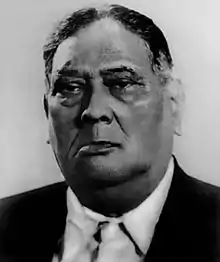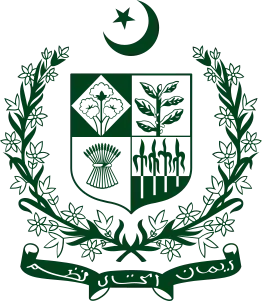East Bengal
East Bengal (Bengali: পূর্ববঙ্গ Purbô Bongo) was a geographically noncontiguous province of the Dominion of Pakistan covering Bangladesh. With its coastline on the Bay of Bengal, it bordered India and Burma. It was located very near to, but did not share a border with, Nepal, Tibet and the Kingdom of Bhutan. Its capital was Dhaka.
East Bengal Bengali: পূর্ববঙ্গ | |||||||||
|---|---|---|---|---|---|---|---|---|---|
| 1947–1955 | |||||||||
 Flag
.svg.png.webp) Coat of arms
| |||||||||
Anthem: National anthem of Pakistan | |||||||||
.svg.png.webp) | |||||||||
| Status | Province of the Dominion of Pakistan | ||||||||
| Capital | Dacca | ||||||||
| Common languages | Bengali, Urdu and English | ||||||||
| Government | Parliamentary constitutional monarchy | ||||||||
| Legislature | Legislative Assembly | ||||||||
| History | |||||||||
| 14 August 1947 | |||||||||
• One Unit | 14 October 1955 | ||||||||
| Area | |||||||||
| 147,610 km2 (56,990 sq mi) | |||||||||
| Currency | Pakistani rupee | ||||||||
| |||||||||
| Today part of | Bangladesh India[1] | ||||||||
The Partition of India, which divided Bengal along religious lines, established the borders of Muslim majority East Bengal. The province existed during the reign of two monarchs, including George VI and Elizabeth II; and three Governors-General, including Muhammad Ali Jinnah, Khawaja Nazimuddin and Ghulam Muhammad. Its provincial governors included a British administrator and several Pakistani statesmen. Its chief ministership was held by leading Bengali politicians.
East Bengal was the most populous and cosmopolitan province in the dominion. East Bengal was a hub of political movements, including the Bengali Language Movement and pro-democracy groups. It was dissolved and replaced by East Pakistan during the One Unit scheme implemented by Prime Minister Mohammad Ali of Bogra.
The provincial legislature was the East Bengal Legislative Assembly.
History
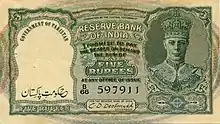
Mandates for partition
Between 1905 and 1911, a province called Eastern Bengal and Assam existed in the region as part of the British Indian Empire. The All India Muslim League was founded in the British province in 1906.
The All India Muslim League adopted the Lahore Resolution in 1940 which envisaged the creation of sovereign states in the Muslim majority areas of eastern and northwestern British India. The League won elections in Bengal in 1946, receiving its largest mandate in the province.
In May 1946, Rohingya Muslim leaders from met with Muhammad Ali Jinnah, and asked for a formal annexation of the Mayu region. Two months later, the North Arakan Muslim League also asked Jinnah to annex the region.[2] Jinnah refused, saying he could not interfere with Burma's internal matters. Proposals were also made to the Burmese government but they were rejected.[3]
The Sylhet region of the British Assam Province also voted to be part of East Bengal due to the campaign of the League. A plebiscite was held which resulted in joining Pakistan. However, the Barak Valley of Sylhet was barred due to Abdul Matlib Mazumdar's delegation. The Chittagong Hill Tracts, which had a 97% non-Muslim population (mostly Buddhist), was awarded to Pakistan by the Boundary Commission due to it being inaccessible to India and to provide a substantial rural buffer to support Chittagong, a major city and port; advocates for Pakistan forcefully argued to the Bengal Boundary Commission that the only approach was through Chittagong.
As a result of these mandates, the Mountbatten Plan and Radcliffe Line established East Bengal as a province of the newly formed Dominion of Pakistan in August 1947.
Nazimuddin ministry

Sir Khawaja Nazimuddin, a former Prime Minister of Bengal, was the first Chief Minister of East Bengal after partition. Nazimuddin was a senior leader of the Muslim League and a close confidante of Pakistan's founder Muhammad Ali Jinnah. Sir Frederick Chalmers Bourne was the first Governor of East Bengal. Partition resulted in making many Hindus to leave East Bengal while Muslims from different parts of the Indian subcontinent migrated to East Bengal. The East-West Bengal border did not see as much violence as seen in the Punjab border between North India and Pakistan.
Jinnah made his sole visit to East Bengal as governor general in 1948. During a speech to students in Dhaka University, he resisted demands to make Bengali a federal language. His refusal sparked fierce protests among East Bengalis who comprised the majority of Pakistan's population. The proposal for Urdu as the sole national language met with strong opposition in East Bengal, where Urdu considered rather alien, especially in light in Bengali's rich literary heritage.
When Jinnah died in 1948, Nazimuddin became the Governor General of Pakistan.
Amin ministry
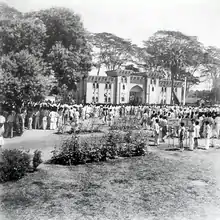
The conservative Muslim League leader Nurul Amin succeeded Nazimuddin as Chief Minister. According to some sources, Amin had strained relations with the federal government, including Prime Minister Liaquat Ali Khan and Governor General Khawaja Nazimuddin. Historians have noted that Amin's government was not strong enough to administer the provincial state; it was completely under the control of the central government of Nazimuddin. His government did not enjoy enough power and lacked vision, imagination, and initiatives.
In 1949, Maulana Bhashani led left-wing elements in the Muslim League to break away and form the Awami Muslim League. The new party was joined by Huseyn Shaheed Suhrawardy, a former Prime Minister of British Bengal. The new party later dropped the word Muslim, fashioned itself as secular and courted votes from East Bengal's large non-Muslim minorities.
The language movement reached a climax in 1952. During the unrest, the police shot dead four student activists. This raised more opposition in the region to the Muslim League.[4] Leading politicians in West and East Pakistan called for Amin's resignation. In subsequent provincial elections, Amin lost his seat in the legislative assembly.
Huq ministry
In the 1954, the United Front coalition resoundingly defeated the Muslim League with a landslide majority. The coalition included the Awami League, the Krishak Praja Party, the Democracy Party and Nizam-e-Islam. The esteemed lawyer A. K. Fazlul Huq, popularly known as the Sher-e-Bangla (Lion of Bengal), became Chief Minister. Huq established the Bangla Academy and called for greater provincial autonomy. He wanted the federal government's responsibilities limited to only foreign affairs and defense.
King Saud of Saudi Arabia sent a plane to bring Huq to a meeting with the monarch.[5] The New York Times published an article claiming Huq wanted independence for East Bengal. While visiting Calcutta and New Delhi, Huq was received by Indian leaders. Barely a few months into office, Huq was dismissed by Governor General Ghulam Muhammad due to allegations against of Huq of inciting secession.
Sarkar ministry
After Governor General's rule was withdrawn in 1954, Abu Hussain Sarkar briefly served as chief minister, before Governor General's rule was again imposed.[6] He started the construction of Central Shaheed Minar.
Khan ministry
Governor General's rule was withdrawn in June 1955. Ataur Rahman Khan of the Krishak Sramik Party was the last Chief Minister. His government declared 21 February, the anniversary of the language movement, a public holiday. He later resigned on 30 August 1956 over inflation of food grains and subsequent food shortages.[7]
One Unit
As part of the reforms and reorganization policies of Prime Minister of Pakistan Mohammad Ali of Bogra, East Bengal was renamed as East Pakistan on 14 October 1955.
Federal law and East Bengal
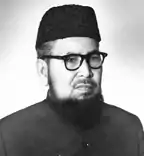
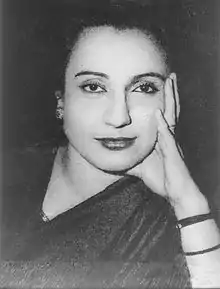
East Bengal existed when Pakistan did not have a written constitution. Instead, the Pakistani courts relied on English common law and the Objectives Resolution.
Constitutional Coup
In 1953, Prime Minister Khawaja Nazimuddin's government was dismissed by Governor General Ghulam Muhammad, in spite of enjoying the confidence of a majority in the Constituent Assembly of Pakistan. The governor general later dissolved the constituent assembly itself. In the case of Federation of Pakistan v. Maulvi Tamizuddin Khan, the speaker of the dissolved constituent assembly challenged the governor general's decision in the Sindh High Court. The case proceeded to the apex court- the Federal Court of Pakistan- where Justice M. Munir ruled in favour of the governor general. Justice A. R. Cornelius expressed dissent and supported Speaker Khan. The dismissal of the prime minister and assembly was one of the first major blows to democracy and the rule of law in the Pakistani union.
Reform demands
Begum Shaista Suhrawardy Ikramullah called for Pakistan's constituent assembly to convene in Dacca as East Bengal was home to the majority of Pakistan's population.[8]
Governors and chief ministers
| Tenure | Governor of East Bengal[9] |
|---|---|
| 15 August 1947 – 31 March 1950 | Sir Frederick Chalmers Bourne |
| 31 March 1950 – 31 March 1953 | Sir Feroz Khan Noon |
| 31 March 1953 – 29 May 1954 | Chaudhry Khaliquzzaman |
| 29 May 1954 – May 1955 | Iskandar Ali Mirza |
| May 1955 – June 1955 | Muhammad Shahabuddin (acting) |
| June 1955 – 14 October 1955 | Amiruddin Ahmad |
| 14 October 1955 | Province of East Bengal dissolved |
| Tenure | Chief Minister of East Bengal[9] | Political Party |
|---|---|---|
| 15 August 1947 – 14 September 1948 | Sir Khawaja Nazimuddin | Muslim League |
| 14 September 1948 – 3 April 1954 | Nurul Amin | Muslim League |
| 3 April 1954 – 29 May 1954 | A. K. Fazlul Huq | United Front |
| 29 May 1954 – August 1955 | Governor's Rule | |
| 20 June 1955 – 14 October 1955 | Abu Hussain Sarkar | Krishak Sramik Party |
| 14 October 1955 | Province of East Bengal dissolved |
Economy, culture, religion and military
.jpg.webp)
Orient Airways, owned by an East Bengal-based industrialist, launched the first flights between Karachi and Dacca. The airline later evolved into Pakistan International Airlines.
The Chittagong Tea Auction was established in 1949.
As a result of the Bengali Language Movement, East Bengal was a center of Bengali cultural activities.
The University of Dacca was hotbed of political thought.
The East Bengal Regiment was formed on 15 February 1948 following Pakistan's independence and transition from post British rule. The infantry of the new Pakistan Army was made up exclusively of men from the western part of the country. It was consequently necessary to raise a regiment in the east. Two companies of Bengali pioneers from the Bihar Regiment were regimented into the 1st Battalion under Lieutenant Colonel VJ Patterson as Commanding Officer (C.O.) and Major Abdul Waheed Choudhury as Officer Commanding (O.C.) Training Coy. Captain Sami Ullah Khan and Captain Abdul Gani in the lead of two Pioneer Companies (1256 and 1407). A total of eight battalions were raised.
Demography
Religions in East Bengal (1901) first Census
It have a population of 28,927,786 during 1901 year conducted by British India. Statistically , 19,121,267 (66.1%) we're Muslims, 9,546,170 (33%) we're Hindus and 260,349 we're others particularly Buddhists and Christians.
Religions in East Bengal (1941 before partition)
East Bengal (present-day-Bangladesh) had a population of 42 million by the year 1941 with around 29.52 million were Muslims (70.3%), while 11.76 million belongs to the Hindu faith constituting 28% of the region. Smaller percentage of Buddhists , Animists and Christians are also present with around 0.72 lakhs together covering 1.7% of the region.
See also
References
- See territorial exchanges between India and Bangladesh.(India–Bangladesh enclaves)
- Thit Maung, Yebaw (1989). Civil Insurgency in Burma. Yangon: Ministry of Information. p. 30.
- Hugh Tinker, The Union of Burma: A Study of the First Year of Independence, (London, New York, and Toronto: Oxford University Press) 1957, p. 357.
- Mahmood, Safdar (1997). Pakistan: Rule of Muslim League and Inception of Democracy (1947-54). Lahore: Jang Publications. p. 116. OCLC 39399433.
Agitation started in 1952 as a reaction against Nazimiid-Din's announcement in Dacca that only Urdu would be the national language. Police opened fire on the demonstrating students, killing four of them. The incident left deep scars on the body politic ... and sealed the fate of the Muslim League in East Pakistan.
- CHRONOLOGY January 1, 1954 — December 31, 1954 Pakistan Horizon Vol. 7, No. 4 (December, 1954), pp. 238-246
- http://en.banglapedia.org/index.php?title=Sarkar,_Abu_Hossain
- Sengupta, Nitish K. (2011). Land of Two Rivers: A History of Bengal from the Mahabharata to Mujib. Penguin Books India. p. 516. ISBN 978-0-14-341678-4.
- http://www.piia.org.pk/about-us/down-memory-lane/item/41-shaista-s-ikramullah
- 'Statesmen of Bangladesh' Retrieved 18 April 2009.
